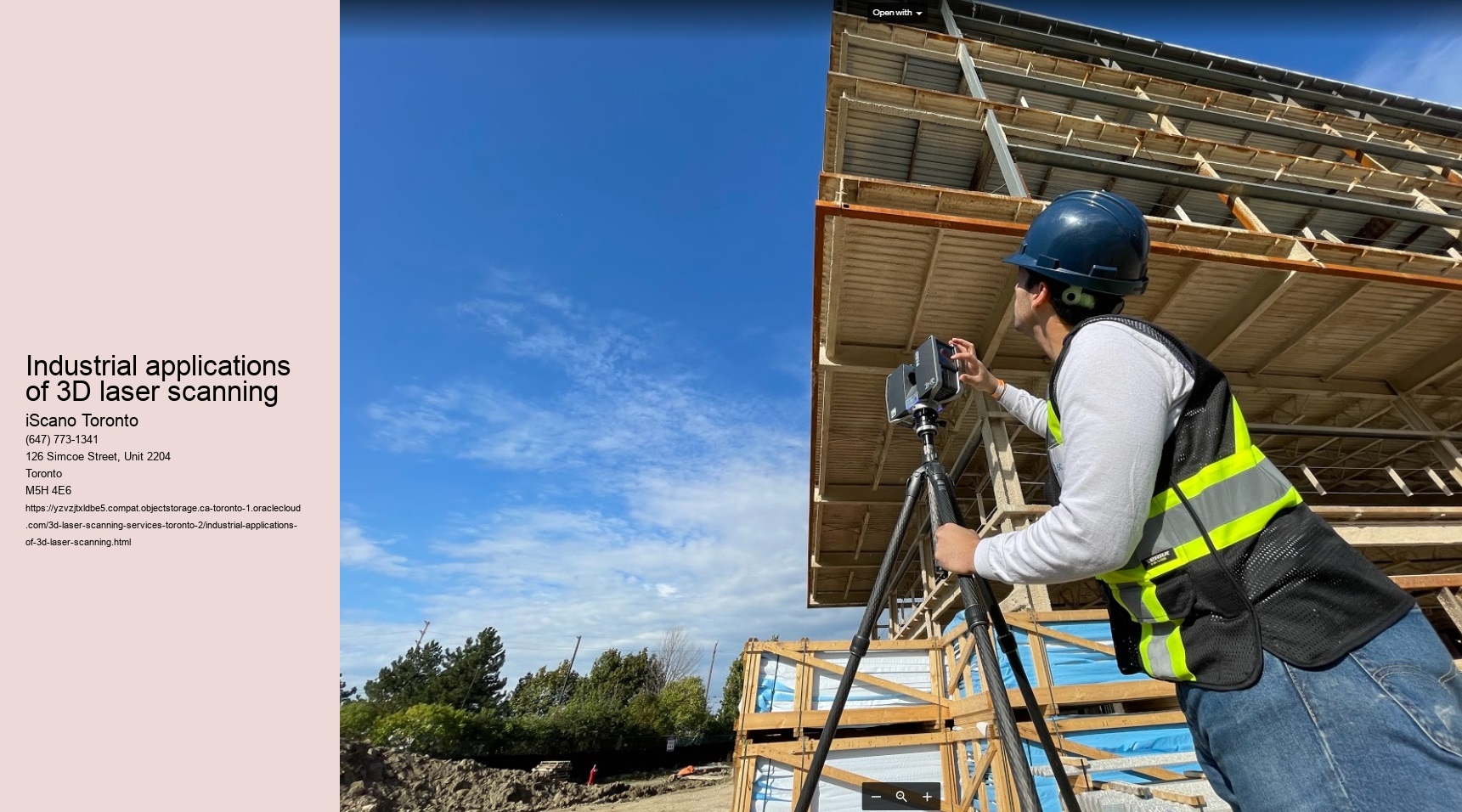Navigating the Future: Exactly How 3D Laser Scanning Services Are Transforming Industries
3D laser scanning services for construction .Introduction
In the realm of technical innovation, few developments have actually been as transformative as 3D laser scanning services. These sophisticated tools have changed markets by supplying exceptional precision, effectiveness, and adaptability. From style to archaeology, from making to medication, the applications of 3D laser scanning are large and constantly expanding. In this post, we delve into the complexities of this modern technology and explore exactly how it is improving the landscape of different industries.
Understanding 3D Laser Scanning
At its core, 3D laser scanning is a non-contact, non-destructive technology that catches the shape, dimension, and details of items or settings by producing laser light beams. These light beams jump off the surface areas they experience, and the scanner gauges the moment it takes for each beam to return, consequently producing a factor cloud—-- a collection of millions of information points that stand for the things'' s geometry in 3 dimensions.
The Advantages of 3D Laser Scanning
One of the primary benefits of 3D laser scanning is its unequaled accuracy. Standard methods of dimension commonly fall brief in catching complicated geometries or detailed details, causing inaccuracies and inadequacies. With 3D laser scanning, nonetheless, even the most elaborate surfaces can be captured with precision down to the millimeter, making certain that every information is represented.
Moreover, 3D laser scanning is incredibly reliable. Unlike conventional surveying techniques that can be time-consuming and labor-intensive, laser scanning permits rapid data acquisition. A solitary scan can record numerous data factors in a matter of mins, substantially minimizing the time and resources needed for data collection.
Another substantial advantage of 3D laser scanning is its non-destructive nature. Unlike physical measurements or invasive evaluation techniques, laser scanning does not require straight call with the item being scanned, maintaining its stability and reducing the threat of damage.
Applications Across Industries
The versatility of 3D laser scanning has actually resulted in its extensive fostering across a myriad of sectors. In design and building and construction, as an example, laser scanning is utilized for as-built documentation, clash discovery, and constructing info modeling (BIM). By precisely recording existing conditions, engineers and engineers can streamline the style procedure, reduce errors, and minimize pricey rework.
In the production field, 3D laser scanning plays an important duty in quality control, reverse design, and fast prototyping. By exactly recording the dimensions of components and products, producers can identify problems, optimize manufacturing processes, and bring products to market much faster.
The impact of 3D laser scanning extends beyond the realm of market and right into fields such as archaeology, forensics, and healthcare. Archaeologists make use of laser scanning to develop thorough 3D designs of historical sites and artifacts, permitting virtual preservation and evaluation. In forensics, laser scanning is made use of to document crime scenes, accumulate evidence, and reconstruct accidents with unrivaled precision. In medical care, 3D laser scanning makes it possible for personalized prosthetics, orthotics, and implants tailored to the special composition of each person.
Future Patterns and Innovations
As technology remains to development, the future of 3D laser scanning holds immense pledge. One emerging trend is the assimilation of expert system (AI) and machine learning algorithms right into scanning software, allowing automated feature recognition, data analysis, and modeling. This combination not just boosts the rate and accuracy of scanning procedures however also opens brand-new opportunities for data-driven insights and decision-making.
Additionally, improvements in hardware, such as the growth of handheld and mobile scanning tools, are making 3D laser scanning more available and portable than ever. These small and lightweight scanners encourage individuals to capture data in remote or challenging environments, even more broadening the reach of this transformative innovation.
Conclusion
To conclude, 3D laser scanning services are transforming sectors around the world, offering unparalleled precision, efficiency, and versatility. From architecture to archaeology, from manufacturing to medicine, the applications of 3D laser scanning are limitless. As modern technology continues to progress, the future holds also greater guarantee, with developments such as AI combination and mobile scanning devices positioned to more broaden the capabilities of this transformative modern technology. In navigating the future, 3D laser scanning will unquestionably continue to be at the leading edge of development, improving industries and driving progression in the years ahead.
